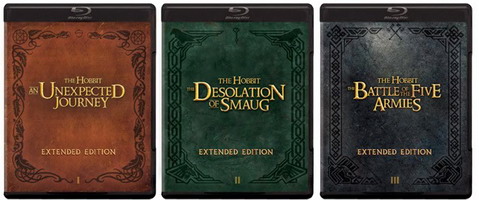
On the more substantial side of things, there is additional material shedding more light on the disappearance of Thorin’s (Richard Armitage) father Thrain (Michael Mizrahi), a closer look at Beorn (Mikael Persbrandt) in his man form and an eye-opening sequence in which Bofur (James Nesbitt) rides a troll as his Dwarf pals do battle in a goat-driven war chariot. In terms of additional and extended film content, much like the Lord of the Rings trilogy, many scenes feature relatively minor or superfluous extensions amounting to little more than longer combat sequences and bonus decapitations. The ability to pause the movies, skip scenes and even watch the films across several sittings means that the biblical length of the trilogy feels like far less of an issue. The good news is that, in terms of length, the longer versions of the movies are arguably better suited to a home viewing format than the theatrical versions to the cinema. So with all three Hobbit movies now available in their extended formats, I find myself questioning the purpose of watching even longer versions of three already excessive movies.
HOBBIT BLU RAY BOX SET PLUS
I’d always felt three films, each the thick end of three hours, was far too excessive for the source material and resulted in a whole lot of padding, plus a couple of utterly redundant Elf-related sub-plots. And yet I have never felt the need to watch the extended Hobbit movies, such is the relative lack of vitality in Peter Jackson’s second Middle Earth trilogy.

I own the Lord of the Rings movies in three different formats (including the ridiculously opulent gift set versions), watch the longer versions of the movies religiously, and adopted them as the absolute version of the trilogy as soon as they become available.


It is a measure of how relatively disappointing The Hobbit movies are that I have never felt compelled to seek out the extended editions.


 0 kommentar(er)
0 kommentar(er)
